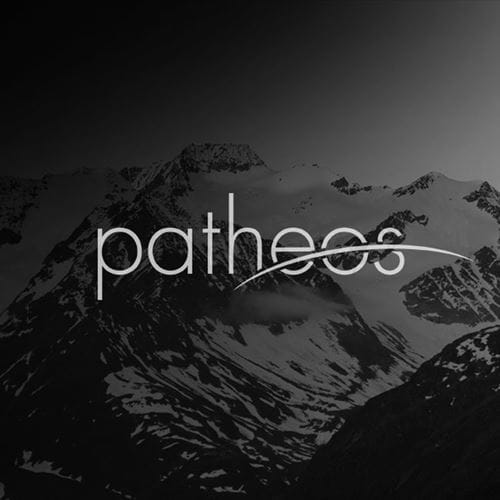- Trending:
- Pope Leo Xiv
- |
- Israel
- |
- Trump
- |
- Social Justice
- |
- Peace
- |
- Love

RELIGION LIBRARY
Paganism
History
Schisms and Sects
While prehistoric religion will always have a shroud of mystery about it, the knowledge of ancient Paganism is immeasurably enhanced by the cultures that adopted literacy. With the advent of writing came the preservation of myths, prayers, hymns, devotional practices, cultic and votive inscriptions, and engraved statues or other ceremonial objects, all of which contribute to an understanding of ancient religious practices. Literacy spread over Europe unevenly, shaped by cultural circumstances. For example, the Celts did not generally adopt writing until they were Romanized (or Christianized). But when written records do appear in a European culture, they reveal not a unified religious practice, but rather the persistence of many different religious and cultic activities.
Unlike religions that were literary from their beginning (such as Christianity or Islam), questions of "schisms" or "sects" in Paganism are basically meaningless. European Pagans never had a common or universal belief system from which schismatic or sectarian groups could break away. On the contrary, ancient Paganism was, according to most scholars, never a dogmatic religion with a unified, core body of teachings or beliefs.
Rather than schisms or sects, a more helpful way to think about Paganism is in terms of natural diversity. Just as there are countless myths and supernatural folktales that appear to have their roots in Pagan spirituality, so Paganism thrived in an innumerable variety of ways. The easiest way to understand this is to consider that different types of mythology come from different regions of Europe. Celtic mythology and Norse mythology were preserved among the people of northern Europe, many of whom lived in regions that never fell under Roman rule. Meanwhile Greek and Roman mythology represent two other forms of myth, in some ways closely related but nevertheless distinct. Various other mythologies were found in Europe, including those of the Baltic, Slavic, Balkan, and other regions (some of these myths having survived only in fragmentary or folkloric forms). Egyptian religion, while technically not of Indo-European origin, spread to southern Europe so that some in pagan Greece and Rome practiced the worship of Isis and other Egyptian deities.
But it is misleading to speak of "Greek religion" and "Roman religion" as if these were two monolithic entities. Not only were the religious practices within each culture varied, but even the mythology itself was unsystematic. Rather than think in terms of "Celtic myth," it would be more accurate to speak of Celtic myths, in the plural, for the written records suggest that different regions in the Celtic world had their own myths, their own cultic practices, and their own local deities.
While some deities may have achieved sufficient renown to be worshipped throughout the Celtic world, these would have been the exceptions rather than the rule; most gods and goddesses were local, anchored to a specific location or a specific feature in the natural world. A British Pagan and a Scottish Pagan from 2,000 years ago may have worshiped completely different gods with distinctive ritual or ceremonial practices, even though they were both Celts and lived in relatively close geographic proximity. This was true throughout Europe. Only with the arrival of writing - as in the case of classical Greece and Rome - did mythologies begin to be recorded, and therefore, to be systematized.
The diversity of ancient Paganism meant that many different gods and goddesses were revered, each with his or her unique sacred stories, unique sacred sites where prayer or sacrifices occurred, and unique holy or festival days. As the evidence from Proto-Indo-European language indicates, different gods from different mythologies may have emerged from common Indo-European religious practices. For example, the Roman sea god Neptune and Nechtan, an Irish god associated with a sacred well, may both have originated in a Proto-Indo-European water deity. But just as the root language of the Indo-Europeans evolved into many languages, so too the mythologies (and religious practices associated with them) of the various Indo-Europeans evolved over time. Geographical differences ensured that Pagan spirituality would evolve in a diversity of ways, even with common ancestral roots.
Back to Religion Library
Unlike religions that were literary from their beginning (such as Christianity or Islam), questions of "schisms" or "sects" in Paganism are basically meaningless. European Pagans never had a common or universal belief system from which schismatic or sectarian groups could break away. On the contrary, ancient Paganism was, according to most scholars, never a dogmatic religion with a unified, core body of teachings or beliefs.
Rather than schisms or sects, a more helpful way to think about Paganism is in terms of natural diversity. Just as there are countless myths and supernatural folktales that appear to have their roots in Pagan spirituality, so Paganism thrived in an innumerable variety of ways. The easiest way to understand this is to consider that different types of mythology come from different regions of Europe. Celtic mythology and Norse mythology were preserved among the people of northern Europe, many of whom lived in regions that never fell under Roman rule. Meanwhile Greek and Roman mythology represent two other forms of myth, in some ways closely related but nevertheless distinct. Various other mythologies were found in Europe, including those of the Baltic, Slavic, Balkan, and other regions (some of these myths having survived only in fragmentary or folkloric forms). Egyptian religion, while technically not of Indo-European origin, spread to southern Europe so that some in pagan Greece and Rome practiced the worship of Isis and other Egyptian deities.
But it is misleading to speak of "Greek religion" and "Roman religion" as if these were two monolithic entities. Not only were the religious practices within each culture varied, but even the mythology itself was unsystematic. Rather than think in terms of "Celtic myth," it would be more accurate to speak of Celtic myths, in the plural, for the written records suggest that different regions in the Celtic world had their own myths, their own cultic practices, and their own local deities.
While some deities may have achieved sufficient renown to be worshipped throughout the Celtic world, these would have been the exceptions rather than the rule; most gods and goddesses were local, anchored to a specific location or a specific feature in the natural world. A British Pagan and a Scottish Pagan from 2,000 years ago may have worshiped completely different gods with distinctive ritual or ceremonial practices, even though they were both Celts and lived in relatively close geographic proximity. This was true throughout Europe. Only with the arrival of writing - as in the case of classical Greece and Rome - did mythologies begin to be recorded, and therefore, to be systematized.
The diversity of ancient Paganism meant that many different gods and goddesses were revered, each with his or her unique sacred stories, unique sacred sites where prayer or sacrifices occurred, and unique holy or festival days. As the evidence from Proto-Indo-European language indicates, different gods from different mythologies may have emerged from common Indo-European religious practices. For example, the Roman sea god Neptune and Nechtan, an Irish god associated with a sacred well, may both have originated in a Proto-Indo-European water deity. But just as the root language of the Indo-Europeans evolved into many languages, so too the mythologies (and religious practices associated with them) of the various Indo-Europeans evolved over time. Geographical differences ensured that Pagan spirituality would evolve in a diversity of ways, even with common ancestral roots.
Study Questions:
1. Does literacy contribute to a unified Pagan culture? Why or why not?
2. Why are questions of Pagan sects meaningless?
3. How does thinking of Paganism as naturally diverse clarify questions of schisms and sects?
4. What can be said about the “common root” of ancient Paganism in today’s practices?
Editor's picks See all columnists










